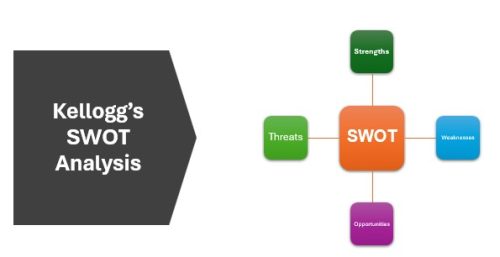Marketing is a critical tool for FMCG brands to capture consumer attention and loyalty. However, even the biggest players can falter, and when they do, the consequences are often significant. This article analyzes five major FMCG marketing failures of 2024, the underlying reasons for these missteps, and actionable solutions to improve future campaigns.
1. Kellogg’s Tone-Deaf Campaign🥣
Kellogg’s Failure Story
Kellogg’s faced backlash when its CEO remarked that consumers should “eat more cereal” during economic hardships. Critics labeled the comment insensitive, particularly during a time of financial strain for many.
Reasons for Failure
| Reason | Explanation |
|---|---|
| Insensitivity | Failed to empathize with the financial struggles of the target audience. |
| Misaligned Messaging | Positioned cereal as a solution to a serious economic issue. |
Proposed Solutions
| Solution | Action Plan |
|---|---|
| Empathetic Messaging | Train leadership in communication strategies sensitive to consumer realities. |
| Market Research Integration | Conduct sentiment analysis to align campaigns with audience expectations. |
SWOT Analysis for Kellogg’s Positioning
| Strengths | Weaknesses |
|---|---|
| Strong brand presence | Insensitive leadership statements |
| Diverse product range | Negative public perception |
| Opportunities | Threats |
| Promoting budget-friendly meals | Increased competition |
| Partnering with food banks | Consumer boycotts |

2. BMW’s Misleading Social Media Gesture 🚗
Failure Story
BMW engaged with a TikTok user who expected a car as a gift but didn’t follow through, leading to accusations of deception.
Reasons for Failure
| Reason | Explanation |
|---|---|
| Misleading Content | The social media interaction implied promises BMW didn’t intend to fulfill. |
| Lack of Consistency | Actions did not align with consumer expectations. |
Proposed Solutions
| Solution | Action Plan |
|---|---|
| Social Media Protocols | Create clear guidelines for public interactions. |
| Real-Time Fact-Checking | Vet responses to ensure alignment with brand values. |
3. Unilever’s Dove Campaign Backlash 🌿
Failure Story
Dove’s “Real Beauty” campaign faced criticism from Greenpeace, accusing Unilever of greenwashing and a lack of substantial sustainability efforts.
Reasons for Failure
| Reason | Explanation |
|---|---|
| Greenwashing Perception | Campaign’s environmental claims were deemed superficial. |
| Lack of Authenticity | The campaign didn’t align with genuine sustainability practices. |
Proposed Solutions
| Solution | Action Plan |
|---|---|
| Authentic Sustainability | Invest in transparent, actionable eco-friendly practices. |
| Collaboration with NGOs | Partner with environmental organizations to ensure credibility. |
P.E.S.T. Analysis for Sustainability Campaigns
| Political | Environmental regulations influencing marketing strategies. |
|---|---|
| Economic | Rising consumer demand for genuine green products. |
| Social | Growing consumer skepticism toward greenwashing. |
| Technological | Innovations in sustainable packaging and production processes. |
4. Bud Light’s Controversial Partnership 🍺
Failure Story
Bud Light collaborated with a trans influencer, Dylan Mulvaney, aiming to rebrand its image. However, the move alienated its core demographic, leading to a sales decline.
Reasons for Failure
| Reason | Explanation |
|---|---|
| Misaligned Targeting | The campaign didn’t resonate with its traditional customer base. |
| Insufficient Research | Ignored the cultural and demographic nuances of its core audience. |
Proposed Solutions
| Solution | Action Plan |
|---|---|
| Target Audience Alignment | Conduct detailed audience segmentation studies. |
| Transparent Intent | Clarify the campaign’s purpose and goals to mitigate misinterpretations. |
5. Willy’s Chocolate Experience🍫
Failure Story
Willy’s Chocolate hosted an event called the “Chocolate Experience,” advertising an immersive journey into the world of cocoa. However, the event turned out to be a disaster, offering little more than jelly beans and lemonade. Attendees expressed outrage, forcing the brand to issue refunds and apologize.
Reasons for Failure
| Reason | Explanation |
|---|---|
| Overpromising Content | Marketing exaggerated the experience, setting unrealistic expectations. |
| Lack of Preparation | Poor event planning led to inadequate delivery. |
| Misjudging Consumer Demand | The event failed to cater to the expectations of chocolate enthusiasts. |
Proposed Solutions
| Solution | Action Plan |
|---|---|
| Clear Communication | Ensure marketing materials match the actual offering. |
| Comprehensive Event Planning | Allocate adequate resources to deliver promised experiences. |
| Regular Feedback Collection | Use surveys to understand consumer desires for such events. |
Funnel Model for Rebuilding Consumer Trust
| Stage | Action | Goal |
|---|---|---|
| Awareness | Share transparent event summaries online. | Build trust through accountability. |
| Engagement | Host smaller, test-run events. | Restore credibility and refine execution. |
| Conversion | Reinvite attendees with free entry tickets. | Encourage consumers to re-engage. |
Lessons Learned: Turning Failures into Learning Opportunities
Marketing failures are inevitable but can serve as critical learning opportunities. By understanding and addressing the reasons behind these FMCG missteps, brands can strengthen their strategies and align better with consumer expectations. Incorporating empathy, clear communication, and robust research are essential components for future success.
FAQs
What are some common FMCG marketing failures?
Misunderstanding target audiences, ineffective messaging, poor product launches, supply chain issues, and failing to adapt to changing consumer trends.
How can FMCG companies avoid marketing failures?
Conduct thorough market research, develop strong brand identities, focus on customer experience, leverage data analytics, and adapt to the evolving digital landscape.
What role does social media play in FMCG marketing failures?
Social media can amplify negative feedback and quickly damage brand reputation if not managed effectively.
How can FMCG companies recover from marketing failures?
Acknowledge the mistake, apologize sincerely, take corrective action, and demonstrate a commitment to learning and improvement.

